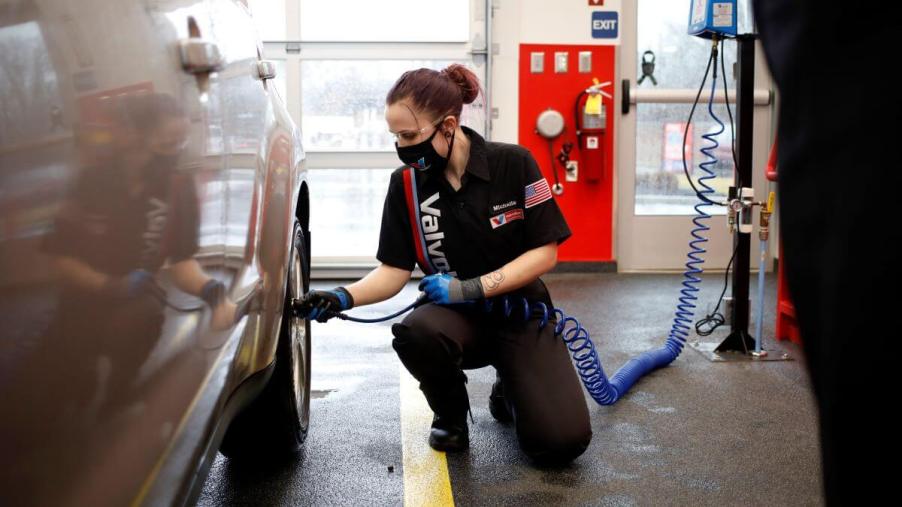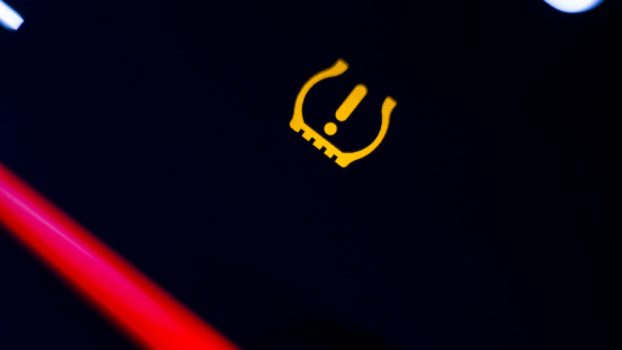
What Happens if You Drive on Low-Pressure Tires for Too Long?
Starting your car bombards you with multiple warning lights on the instrument panel and chimes or dings from the speakers. The predictability of those warning lights sometimes causes some drivers to ignore them. However, the vehicle’s Tire Pressure Monitoring System, or TPMS, light indicates the need for tire inspection or possible maintenance, and overlooking it could be dangerous.
How does the TPMS light work?
Priority Tire says a vehicle’s TPMS light receives a signal from sensors inside each tire through a monitoring unit. The monitor keeps track of each tire’s pressure, measured in PSI (pounds per square inch) in the U.S., as it fluctuates with temperature changes or escaping pressure. The monitor activates the TPMS light whenever the pressure in one or more tires falls below safe limits, letting you know a problem requires attention.
While the TPMS light requires your attention, it doesn’t always indicate the need to change a flat tire. Bridgestone Tire says there are many reasons why you could see the TPMS light. Here are some scenarios:
- The TPMS light should come on briefly when starting your car: This is normal.
- The TPMS light comes on while driving: Check the car’s tires.
- The TPMS light is on when you start driving, but the tire check is good, and it goes off before you get to a compressor: Cold temperatures cause lower tire pressure, but driving increases tire temperature and pressure. Use a gauge to check and properly inflate tires or seek service.
- The TPMS light flashes and then stays on: This could mean a fault in the system, indicating the TPMS is offline. You’ll need to seek service for this one.
Is driving on low-pressure tires dangerous?
The Drive says continuing to operate a vehicle with an illuminated TPMS light without inspecting the tires is unsafe. While some cars show the PSI of each tire on the instrument panel, the TPMS usually lights up only to indicate an underinflated tire condition. So, it’s only possible to determine if the tire is a little low or utterly flat with an inspection. Car and Driver says driving on a low tire can shorten its lifespan, reduce vehicle performance and, worst case, lead to a blowout.
What you should do when your TPMS light stays on or comes on while driving
If your TPMS light stays on, inspecting your car’s tires is your first task. While a visual inspection represents the least favorable option, if you don’t have a tire pressure gauge, it’s better than driving on a flat or overinflating your tires. In the case of a flat tire, a trip to a tire shop is necessary, but if the tire or tires are low, you should use a gauge and compressor to inflate them properly.
While some prefer pressurizing their tires nitrogen, requiring specialized service providers, others use atmospheric air supplied by an air compressor. You could take your car to a tire shop for help, buy a small air compressor, or visit a gas station with tire inflation capability. If you need help using a compressor or tire gauge, most tire shops and auto parts stores will gladly demonstrate the process if you buy a tire pressure gauge.
Being unsure of the correct way to check or reinflate your tires isn’t as bad as not asking for help and ruining a tire or having an accident caused by a blowout. It’s a fact that no one knows how to do these things until someone shows them, so please ask a professional for help.




